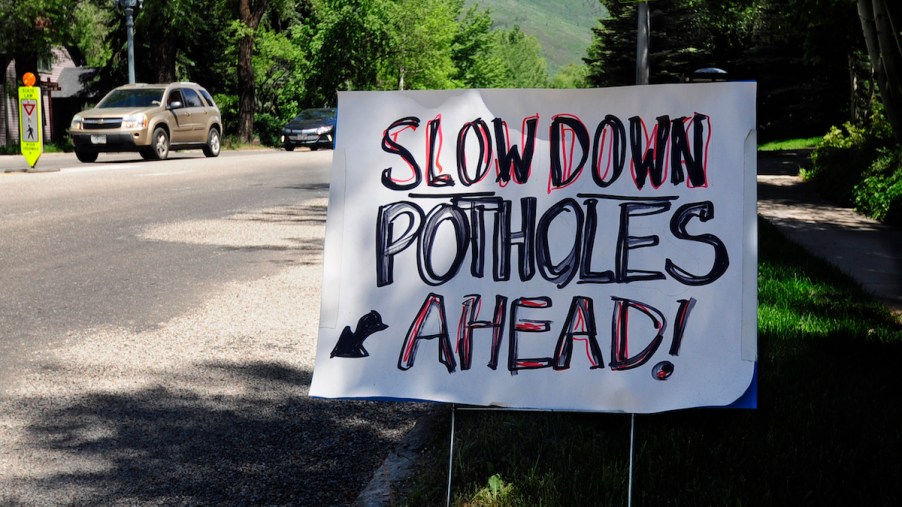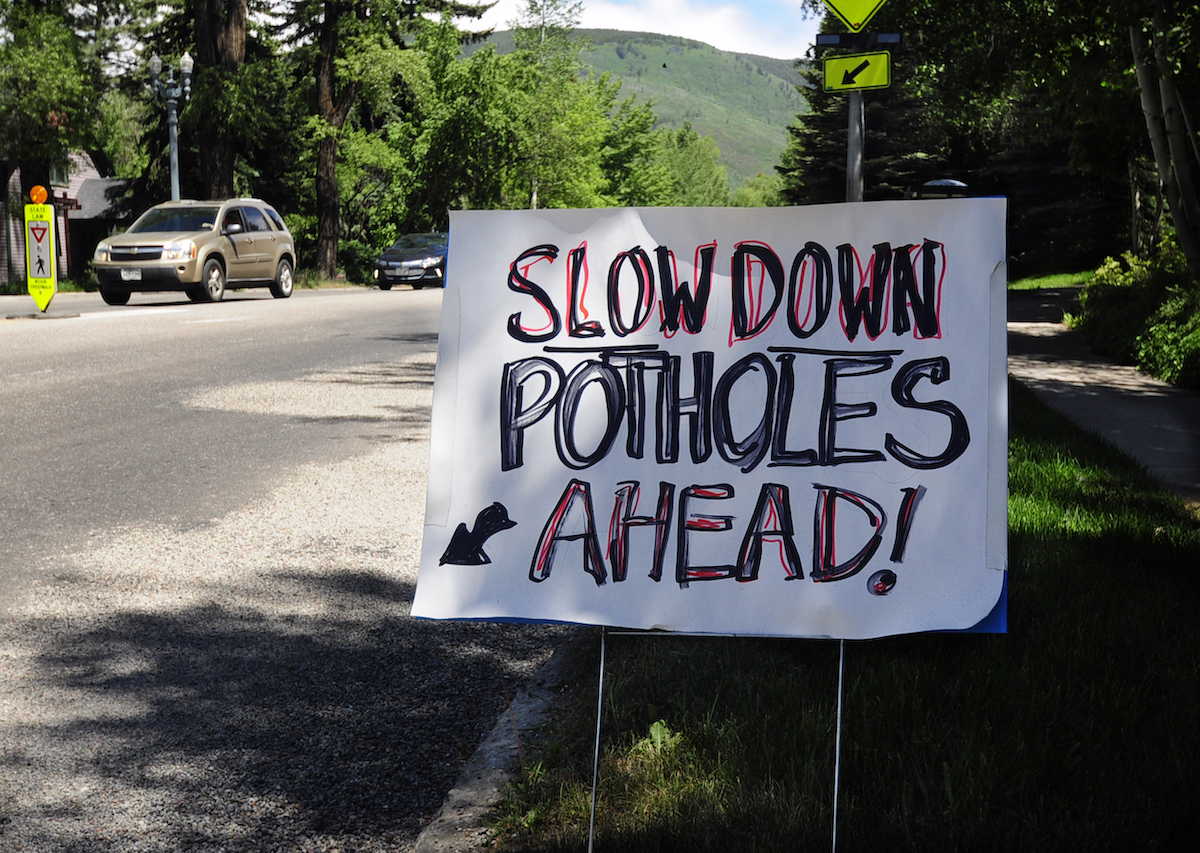
6 Things to Do When You File a Pothole Claim With Your Insurance
They might not look like much from a distance, but potholes can seriously damage cars. You might not even notice a pothole until you hit it. The damage can be so severe that you might consider contacting your car insurance company. But consider these six things before filing a pothole claim with your insurer.
Potholes can be a nuisance

Potholes can happen when water under a road freezes or washes away the earth underneath. Many potholes form during the winter because of the colder temperatures. The freeze-and-thaw cycle causes the road to collapse.
Some potholes are a nuisance, while others can wreak havoc on your car. For instance, your vehicle could get a flat tire and bent wheels. Potholes can also affect a car’s suspension, steering, or exhaust systems.
How can you lessen the chances of damaging your car from a pothole? For one, be very careful while driving in the rain or soon after a rainstorm — muddy water hides potholes. Also, check your tire pressure because well-inflated tires handle the jolts from potholes much better. In addition, if you’re driving along and notice that hitting a pothole is inevitable, don’t slam on the brakes. It’s better for the suspension if you allow your car to roll through the pothole.
Try as you might, you’ll probably hit a pothole at some point in your driving life. But do you know how to file a pothole claim with your auto insurance company? According to Erie Insurance, here are six things to do after you hit a pothole.
1. Keep a detailed record
Take notes about where and how you hit the pothole. Note the date and time when the damage occurred. Don’t forget the exact location. Don’t forget to write a detailed description of the damages to your car.
2. Take a photo
Snap multiple pictures of the pothole. Proving a visual will help when making a pothole claim with the car insurance company. Also, take detailed photos of any damage to your vehicle.
3. Ask eyewitnesses for information
Did anyone see your car hit the pothole? If so, get a detailed account from them and write it down. Get their names and contact information. Providing eyewitness accounts will also help your case with the insurance company.
4. File a police report
You know to contact the police after a car accident. It’s no different when your car sustains damage from a pothole. Contact the appropriate state, county, or city authorities and give a full report. Provide all the information you took down at the scene, including photos. Get a copy of the police report so you can include it with your insurance claim.
5. Get multiple repair estimates
Most auto insurance companies ask that you submit a repair estimate with your claim. But get two or three estimates so your case is even more thorough.
6. Don’t waste time
File your claim as soon as possible. Your insurance coverage might place a limit on the number of days in which you can file a claim after a pothole incident. Don’t waste time. Get all of your information compiled, and submit it sooner than later.


